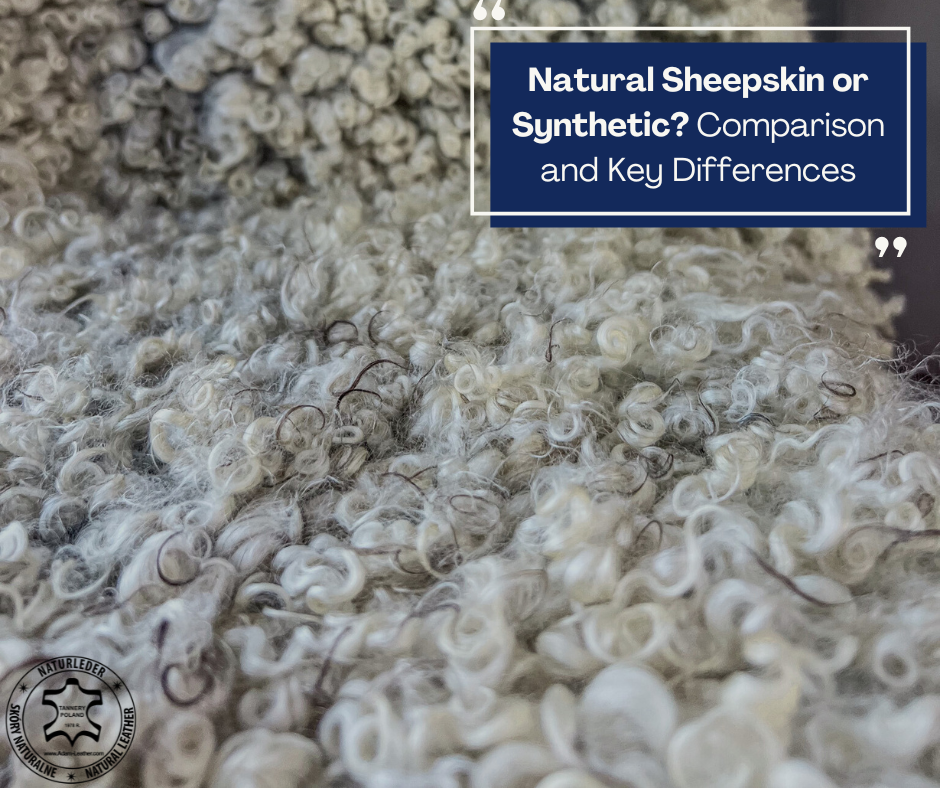Natural Sheepskin or Synthetic? Comparison and Key Differences
Natural sheepskin has been popular for years in both the fashion industry and interior design. However, with technological advancements, synthetic alternatives have also appeared on the market. What are the differences between these two materials, and which one is the better choice? Let’s take a closer look at the key differences.
1. Origin and Production Process
-
Natural sheepskin comes from sheep and is a byproduct of the meat industry. After tanning, it becomes a durable and soft material that retains its properties for years.
-
Synthetic sheepskin is made from synthetic materials, usually polyester or acrylic. Its production process involves the use of chemicals and high energy consumption.
2. Appearance and Texture
-
Natural sheepskin has an irregular fiber structure, making it look more authentic and aesthetically pleasing. It is soft to the touch, and its surface has a subtle sheen.
-
Synthetic sheepskin often has a uniform texture and an artificial shine. It may resemble real sheepskin, but it lacks natural softness and elasticity.
3. Thermal Properties and Breathability
-
Natural sheepskin has excellent thermal insulation properties – it keeps you warm in winter and prevents overheating in summer. It is also breathable, meaning it does not cause sweating and ensures comfort.
-
Synthetic sheepskin does not have these properties. It can cause overheating, and its low breathability traps moisture, leading to discomfort.
4. Durability and Maintenance
-
Natural sheepskin, with proper care, can last for many years. It is resistant to creasing and deformation.
-
Synthetic sheepskin wears out faster – after a few years, it may pill, lose its shape, and lose its aesthetic appearance.
5. Environmental Impact and Sustainability
-
Natural sheepskin is biodegradable and comes from renewable resources. It does not contribute to plastic pollution.
-
Synthetic sheepskin is derived from petroleum-based materials, and its decomposition takes decades. Its production process generates a large amount of waste and CO₂ emissions.
6. Price and Availability
-
Natural sheepskin is more expensive because its production requires more labor and natural resources. However, its durability and quality make up for the higher price.
-
Synthetic sheepskin is a cheaper alternative but does not offer the same properties as real sheepskin.
Which Choice Is Better?
If you care about durability, comfort, and ecology, natural sheepskin is undoubtedly the better choice. However, if price is the most important factor and appearance is secondary, synthetic sheepskin may be a more affordable option.
One thing is certain – natural sheepskin is an investment that combines beauty, functionality, and sustainability for years to come.












